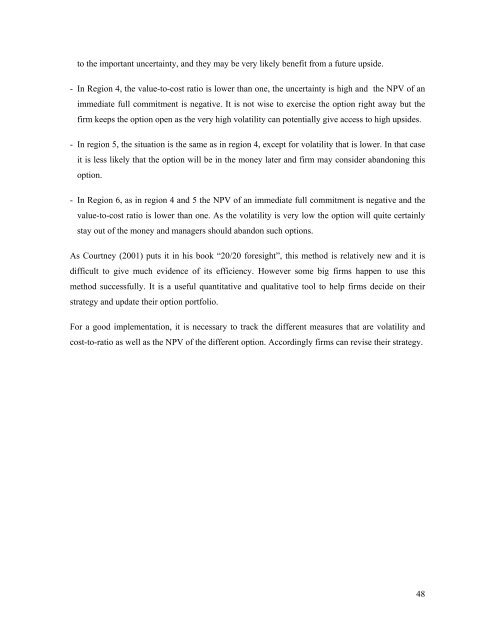Managing Risks of Supply-Chain Disruptions: Dual ... - CiteSeerX
Managing Risks of Supply-Chain Disruptions: Dual ... - CiteSeerX
Managing Risks of Supply-Chain Disruptions: Dual ... - CiteSeerX
You also want an ePaper? Increase the reach of your titles
YUMPU automatically turns print PDFs into web optimized ePapers that Google loves.
to the important uncertainty, and they may be very likely benefit from a future upside.- In Region 4, the value-to-cost ratio is lower than one, the uncertainty is high and the NPV <strong>of</strong> animmediate full commitment is negative. It is not wise to exercise the option right away but thefirm keeps the option open as the very high volatility can potentially give access to high upsides.- In region 5, the situation is the same as in region 4, except for volatility that is lower. In that caseit is less likely that the option will be in the money later and firm may consider abandoning thisoption.- In Region 6, as in region 4 and 5 the NPV <strong>of</strong> an immediate full commitment is negative and thevalue-to-cost ratio is lower than one. As the volatility is very low the option will quite certainlystay out <strong>of</strong> the money and managers should abandon such options.As Courtney (2001) puts it in his book “20/20 foresight”, this method is relatively new and it isdifficult to give much evidence <strong>of</strong> its efficiency. However some big firms happen to use thismethod successfully. It is a useful quantitative and qualitative tool to help firms decide on theirstrategy and update their option portfolio.For a good implementation, it is necessary to track the different measures that are volatility andcost-to-ratio as well as the NPV <strong>of</strong> the different option. Accordingly firms can revise their strategy.48
















